A relationship map is a visual chart of key stakeholders. It helps business leaders and account managers understand the relationships, interactions, and influencers among their clients.
With a typical buyer group now consisting of six to 10 decision makers, it’s more important than ever to uncover and leverage the right connections. This is where a relationship mapping strategy comes in handy.
1. Increased Sales
The best B2B sales teams are able to understand and communicate their client’s needs, and the best way to do that is by building relationships with important decision-makers within an account. By using a relationship mapping tool, you can identify key influencers and decision-makers, and use that information to create more targeted account-based marketing (ABM) campaigns.
Additionally, a relationship map can help you determine who has your back and who doesn’t, which is especially useful when working on complex deals. Having full visibility into the quality of your stakeholder relationships, as well as their route to power, will allow you to align sales tactics and strategies with the priorities and goals of critical stakeholders and close more of those super-sized deals – bringing you one step closer to reaching revenue targets.
Relationship mapping typically consists of a visual chart with organizational charts on both sides of the equation, showing existing connections between key stakeholders. These connections are shown as lines matching each stakeholder with other individuals on the team, and different colors and symbols can be used to indicate the type of relationship or internal alliance, and more.
2. Increased Customer Satisfaction
Ultimately, sales teams need to understand their customers and prospects to deliver a powerful value proposition. And this is where relationship mapping comes into play.
A good relationship map paints an accurate picture of all stakeholders in a given account with the relationships between them, making it easy to identify potential opportunities. It also shows how your company can help key players achieve their goals and overcome their challenges.
For example, a company can use a relationship map to pinpoint the people within an organization who can best serve as advocates and evangelists. It can then focus on building and nurturing those relationships.
This strategy is especially helpful when dealing with complex deals. With an average of 6 to 10 people involved in B2B purchasing decisions, having complete visibility into the relationships between all the players gives you a competitive advantage. And it makes it easier to address all the friction points that often turn into churn precursors. You can then offer tailored solutions that address all the pain points, improve support efficiency, and grow revenue.
3. Increased Retention
Relationship mapping is a powerful tool for helping organizations strengthen relationships with community partners. This is especially important for those involved in collaborative efforts addressing social and environmental issues. This type of mapping is also beneficial for leadership teams and establishing future leaders who will be expected to develop strong relationships with key stakeholders.
A relationship map is a visual chart that includes the key decision-makers from both sides of an opportunity and existing relationships between them. It also shows if they are influenced by each other. This can be done using different colors, symbols or line types to highlight the influence.
The ability to identify a customer’s decision-makers and influencers can help you deliver the right message at the right time. This can improve your account-based marketing (ABM) strategy and increase the success of your team. With this knowledge, you can better understand your customer’s needs and expectations and provide personalized interactions to ensure a positive experience. This can ultimately lead to higher retention rates. In a business world where potential clients say “pass” all the time, this kind of insight can give you a competitive edge.
4. Increased Profits
With a clear picture of existing relationships, relationship mapping can help businesses find new opportunities. This can include expansion into new markets or even networking with executives within a client’s buying group to build strong connections that could eventually lead to business wins.
This is especially important for complex accounts, where decision-making involves multiple stakeholders and lines of influence may not follow a traditional hierarchical structure (think of an official org chart). Using relationship mapping technology, sellers can visualize the political landscape and collect vital data to craft more comprehensive strategies that meet both short-term and long-term account goals.
It’s also important to regularly update the relationship map, as there will be changes to both internal and external entities that impact the network. These can include resource changes, changes in metrics or goals, and even new reporting structures. Having this information up-to-date will allow sellers to better understand how their messaging and tactics are being received and provide personalized engagement to their target accounts. This ultimately increases conversions and overall revenue.
5. Increased Employee Satisfaction
The goal of relationship mapping is to increase employee satisfaction by leveraging the full potential of relationships within a business. By identifying critical stakeholders and their internal power structure, a business can create a plan that ensures the success of key projects and initiatives.
The benefits of relationship mapping are numerous. It allows companies to identify the individuals who are able to influence a purchasing decision, the people that hold key positions of authority and those who may be potential sources of conflict. Additionally, the process of building a map helps to clarify communication channels and ensure that employees are being heard by the right people.
By using relationship mapping software, businesses can streamline the process of developing and updating visual maps, resulting in significant time savings. By providing timely insights in a centralized location, the platform removes the need to sift through spreadsheets or Word documents for the information needed. This enables teams to work more efficiently, increasing the number of opportunities to win new clients and protect existing ones. Relationship mapping also identifies potential issues that could affect future growth.

